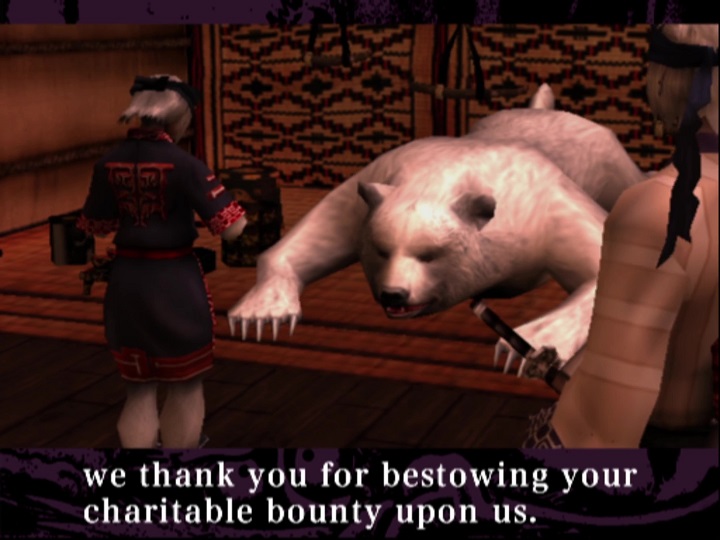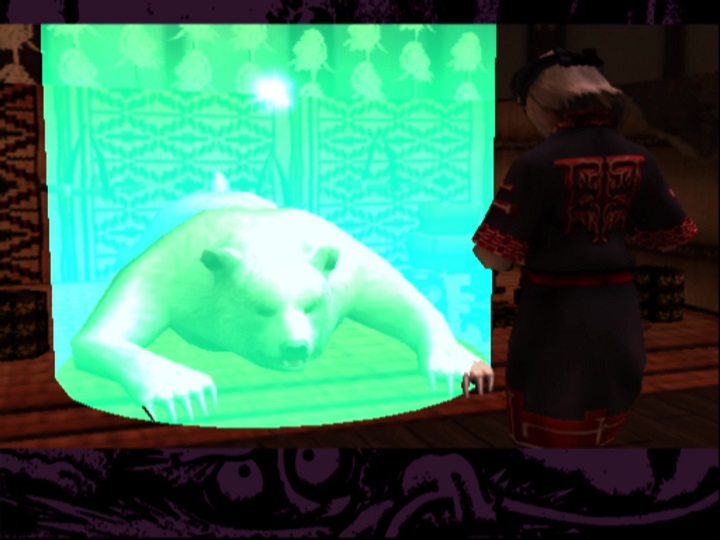Flower, Sun, and Rain depicts consciousnesses being transferrable between the bodies of some people in Kamui’s ethnic group. Since most of the Mondo Sumios survive and multiple Remys and Sundance Mics are shown living simultaneously, this is possible without the death of the previous body, implying Kamui could simultaneously exist in multiple people as a set of memories, mirroring the sense in which Kamui exists as “the information people possess.” In “Kill the Past,” Lady Rits, the elder of the Sundance tribe, describes a “god” entering the silver eye Uminosuke stole, and Tokio calls it a demon, possibly referring to Kamui/Ayame. The 25th Ward also favors a supernatural reading of a “crime virus” as a collective spiritual entity that drives people to become criminals, though now primarily in a negative sense. In “UTSUTSU,” for instance, Meru favors that perspective: “This project, in its poorly executed attempt to analyze and copy [Uehara Kamui], may have touched on something with which it should not have made contact.”
As mentioned above, “Uehara Kamui” includes “Kamui” like the names of many Ainu deities (e.g. Ape-kamuy, Kotan-kor-kamuy). Utagawa quotes Kitakamae Tarō: “The term kamuy is often translated as ‘god,’ but what the concept really represents is a spiritual being that appears in the aynu [human] world clad in the outer form of animals such as bears, owls, and salmon, plants such as monkshood, diseases such as smallpox, and natural phenomena such as fire and lightning” (255). A kamuy may reside in an animal or object but is not the animal or object. This physical form, called the hayokpe, is a temporary costume the kamuy wears while visiting the human world, as in the famous iomante, the ceremony in which a bear that the community has raised is butchered and the kamuy inside the animal returns home.


In this reading, Uehara Kamui is a being that temporarily inhabits a human like a hayokpe. He moves to new hosts and does not die even if the temporary hayokpe does, monitoring humanity and giving them what they deserve in a manner analogous to at least some kamuy. Even allowing his hayokpe to be killed, as in Fujiwara’s execution, is in character for kamuy, part of the reciprocal relationship between humans and kamuy. For instance, in Chiri Yukie’s first kamuy yukar, humans shoot the owl kamuy (Chiri and Selden 6–7, 12). But this is not one party killing the other. The kamuy gives the humans his flesh in exchange for their arrows and, later, other items and kindness. The people continue to honor the dead owl because the kamuy inside it remains alive.
Mirroring their disrespect of the land (whose history they attempt to erase in Twilight Syndrome and Moonlight Syndrome), the old men of the political syndicates treat Kamui/Ayame with the same dehumanizing disrespect with which they treat the public, as material resources rather than people. So Uehara Kamui obviously pursues rather more aggressive ends than Ainu would understand their kamuy ordinarily seeking. Rumi already calls Kamui a god. In “YUME,” Tokio likens Kamui to both a “demon” and a “god.” The black-and-white Christian conception that “demon” and “god” imply, at least in English, is misleading. The kamuy, or a similar conception of spiritual beings, matches the gray fluidity of the Kill the Past cosmology. If they are taken as literal spiritual beings and not as just ideology or “facts” (criminal information), it is in this sense that Kamui/Ayame is/are a god.